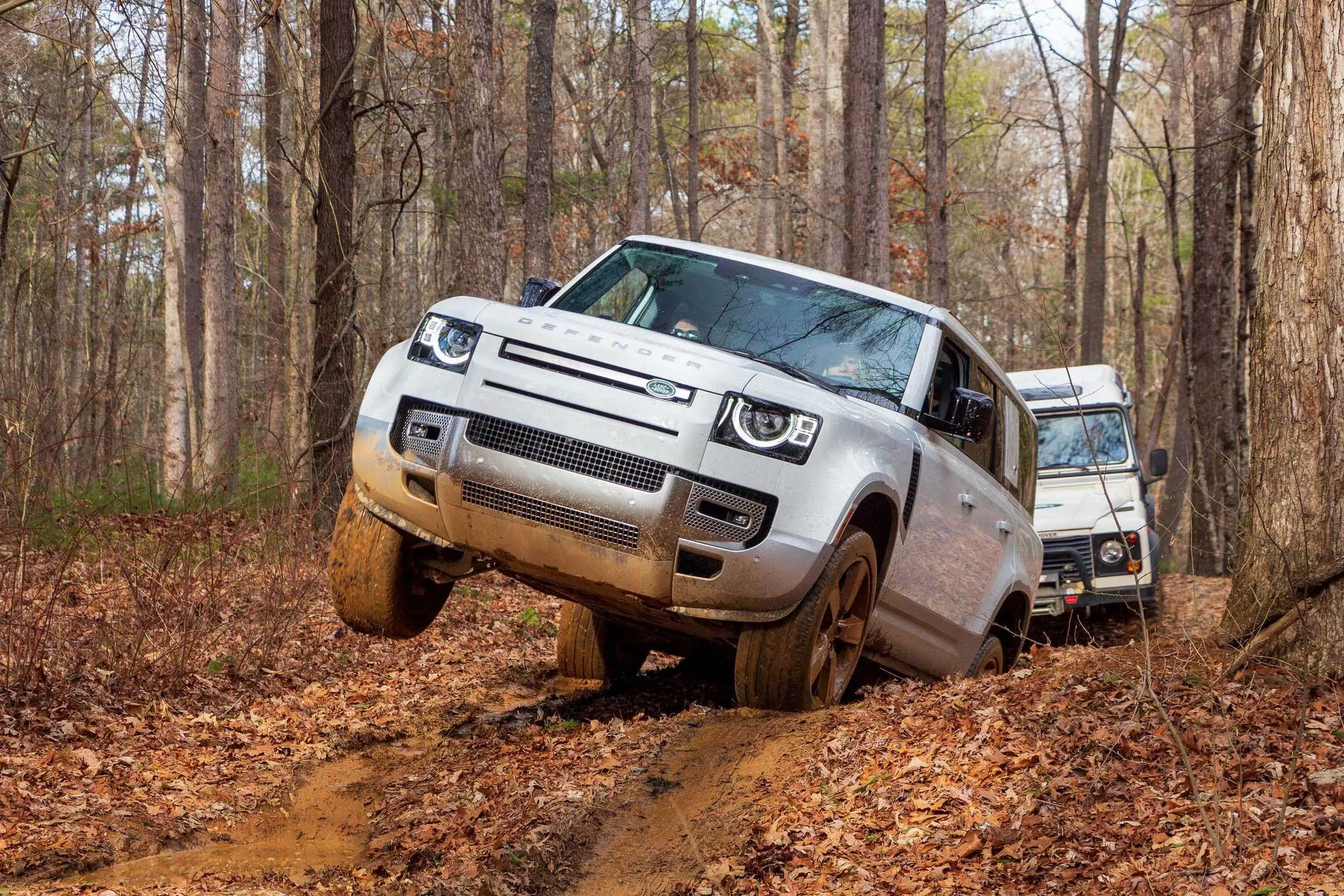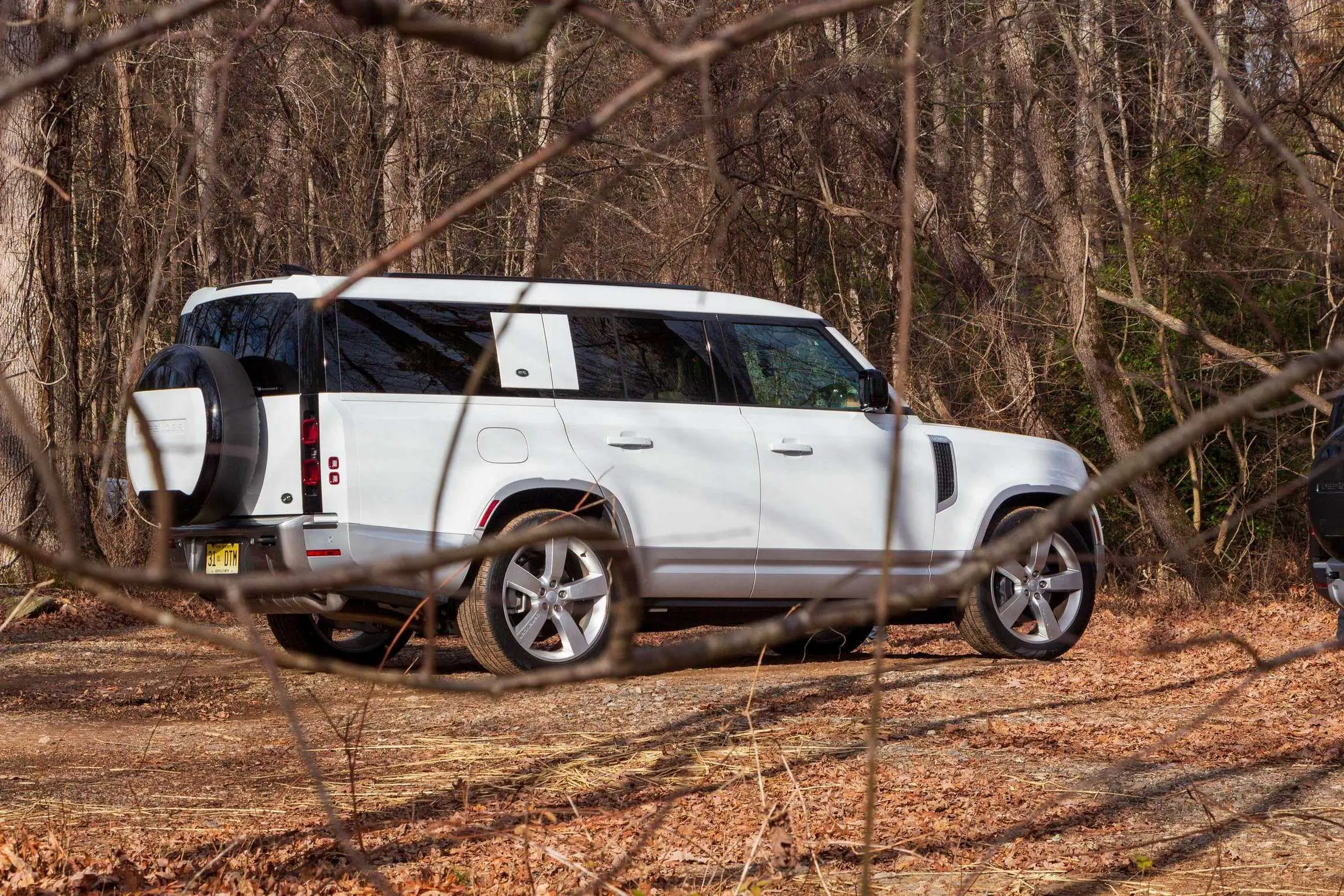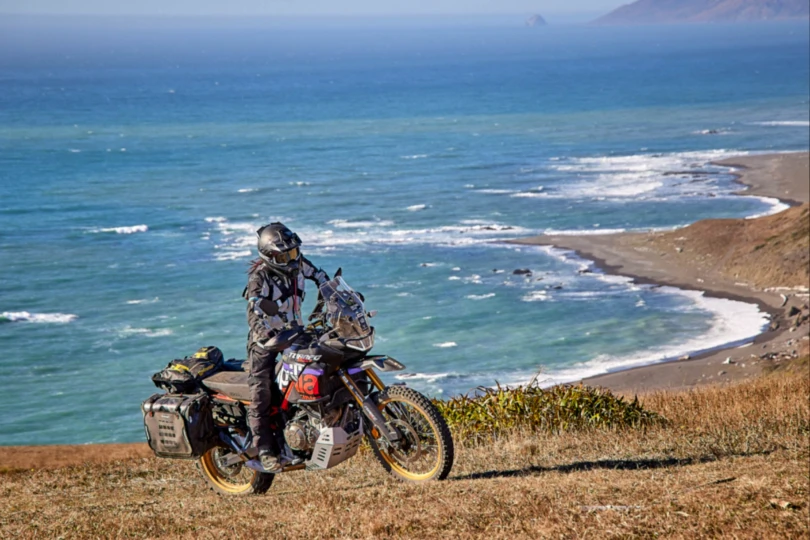The Land Rover Defender 130 is longer and has more seats than any other new Defender. This, of course, means it can haul around more people and gear on your off-road adventures.
We’re at the Land Rover Experience Center in Asheville, North Carolina, to find out at what expense to capability that extra capacity comes with. And, to see just how far you can take a modern Defender with seating for eight on board.
Defender’s numbers used to mean something. The classic Defender 90 had a wheelbase of 93 inches (close enough), the 110 was 110, and the Defender 130 was 127. OK, maybe they weren’t exact, but they were at least in the ballpark.
With the new generation Defender, the numbers mean little to nothing about the wheelbase. The Defender 90 now has a 101.9-inch wheelbase, the 110 is 119 inches between the axles, and the Defender 130 is also 119 inches.
The D130 is 13.3 inches longer than the D110, and all of that extra is behind the rear axle.
In short: The largest Land Rover Defender, the D130, offers a whole bunch more interior space while only sacrificing minimal capability at the extreme end of the off-road spectrum. We just wish the extra cargo room was flat like the cargo space in the Defender 110 instead of uneven and a bit tougher to use to its full potential.
- Engine: 3.0L I6 w/ 48V Mild Hybrid
- HP/Torque: 395/406
- MPG: 17/21/19 city/highway/combined
- Cargo: 13.7 cu. ft. (43.5 w/ seats folded)
- Towing: 8,200 lbs.
Pros
- Three rows for adults
- Smooth, plentiful power
- Lots of cargo space
- Excellent ride on- and off-road
- Impressive 4×4 system
Cons
- Middle row doesn't fold flat
- Lumpy cargo floor
- No USB ports for rear passengers
- Stiff driver's seat
- Poor departure angle
- No V8 or PHEV options, yet
Defender 130 Gets Usable Third Row
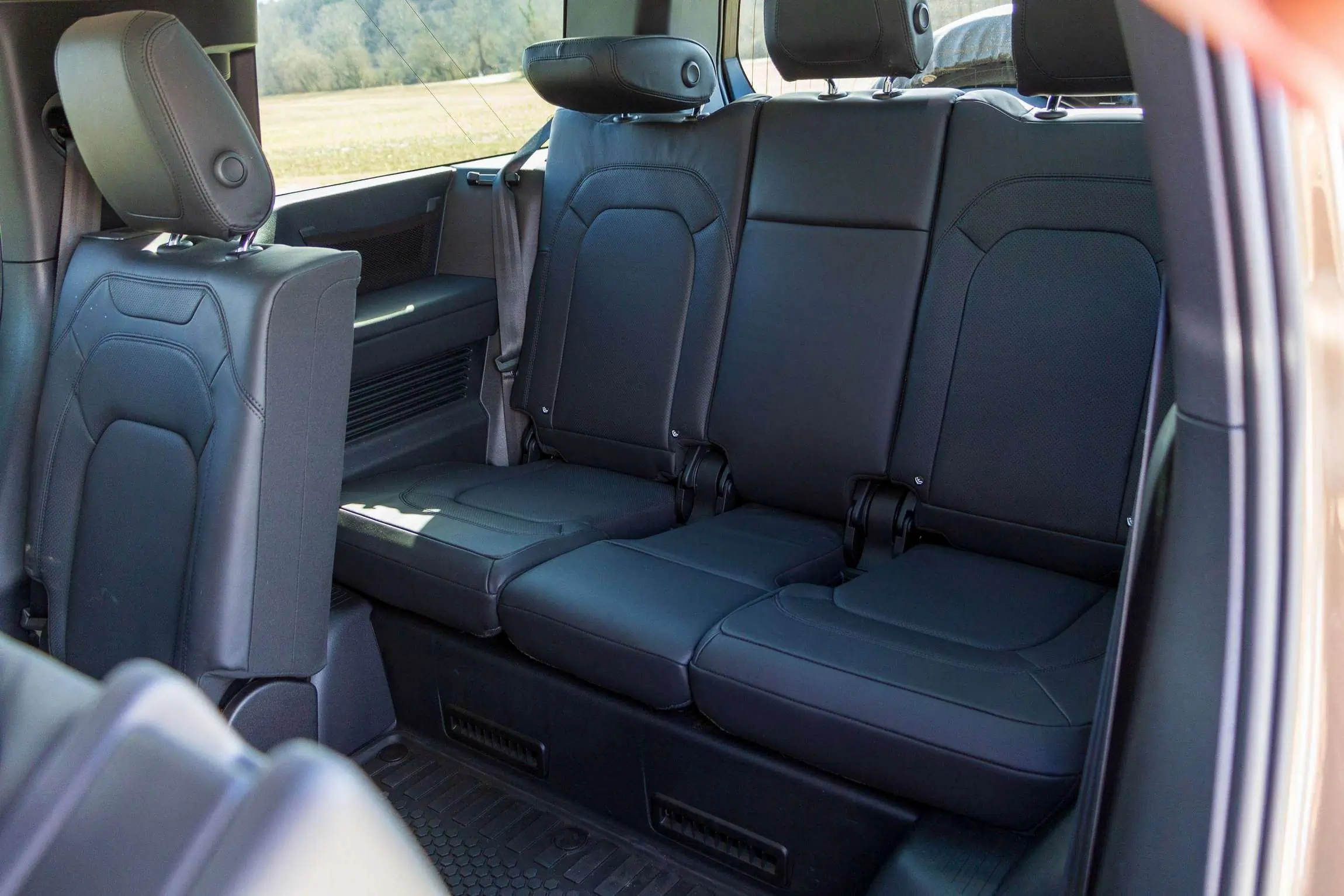
The long rear overhang adds a load of room for rear-seat passengers — 11.2 inches more knee room for the third row of seats, to be precise.
Defender 110’s optional third row is a penalty box for kids you don’t like. With the 130, it’s transformed into something much more usable. I am uncomfortable in the second row of plenty of SUVs, and at 6’3″, I fit in the third row just fine. The middle row slides fore and aft, making even more foot room available for those in the way back.
It’s not all fun and third-row games, though. The entryway to the back is quite narrow. I found it easier to fold the second row (almost) flat and then slide in and over it instead of taking the intended path.
On the one hand, that’s a touch annoying. On the other, going off-road inside your Land Rover seems quite on brand.
More Cargo Space, Less Practicality?
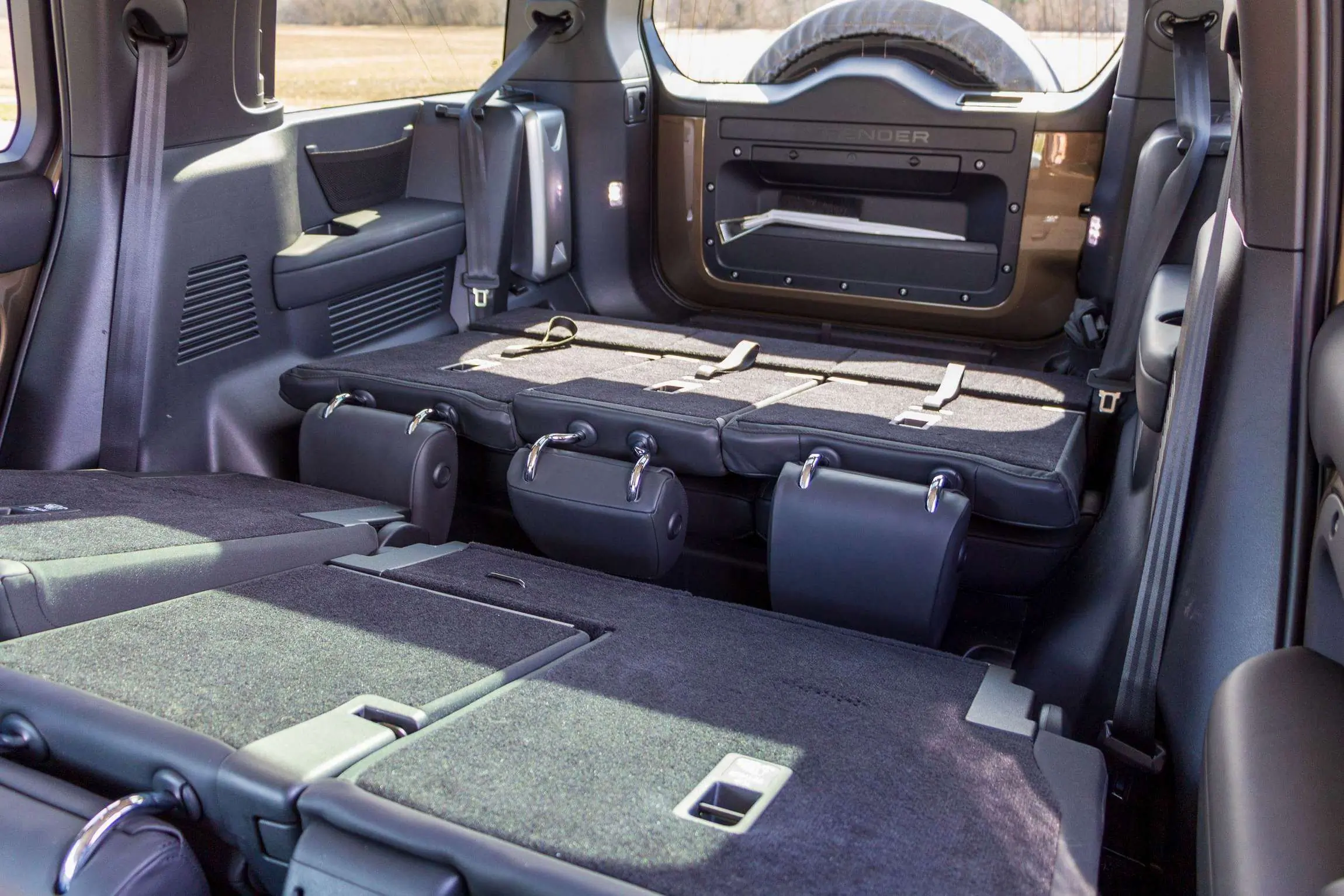
Behind that third row, Defender 130 offers 13.7 cubic feet of cargo space. That’s lots more than the 8.2 offered in the 110. Fold the third row of seats, and you have 43.5 cubic feet versus the 32.3 of the three-row Defender 110.
With 81.5 inches of length from the back of the front seats, until you hit the side-opening tailgate, you might think the Land Rover Defender 130 would be an ideal rig if you were planning to sleep inside. You would be wrong — unless you’re planning to rig up some serious bed modifications.
The floor is far from flat, even dropping down significantly behind the rearmost seats. The second and third rows don’t fold completely flat, and there are large gaps between the rows.
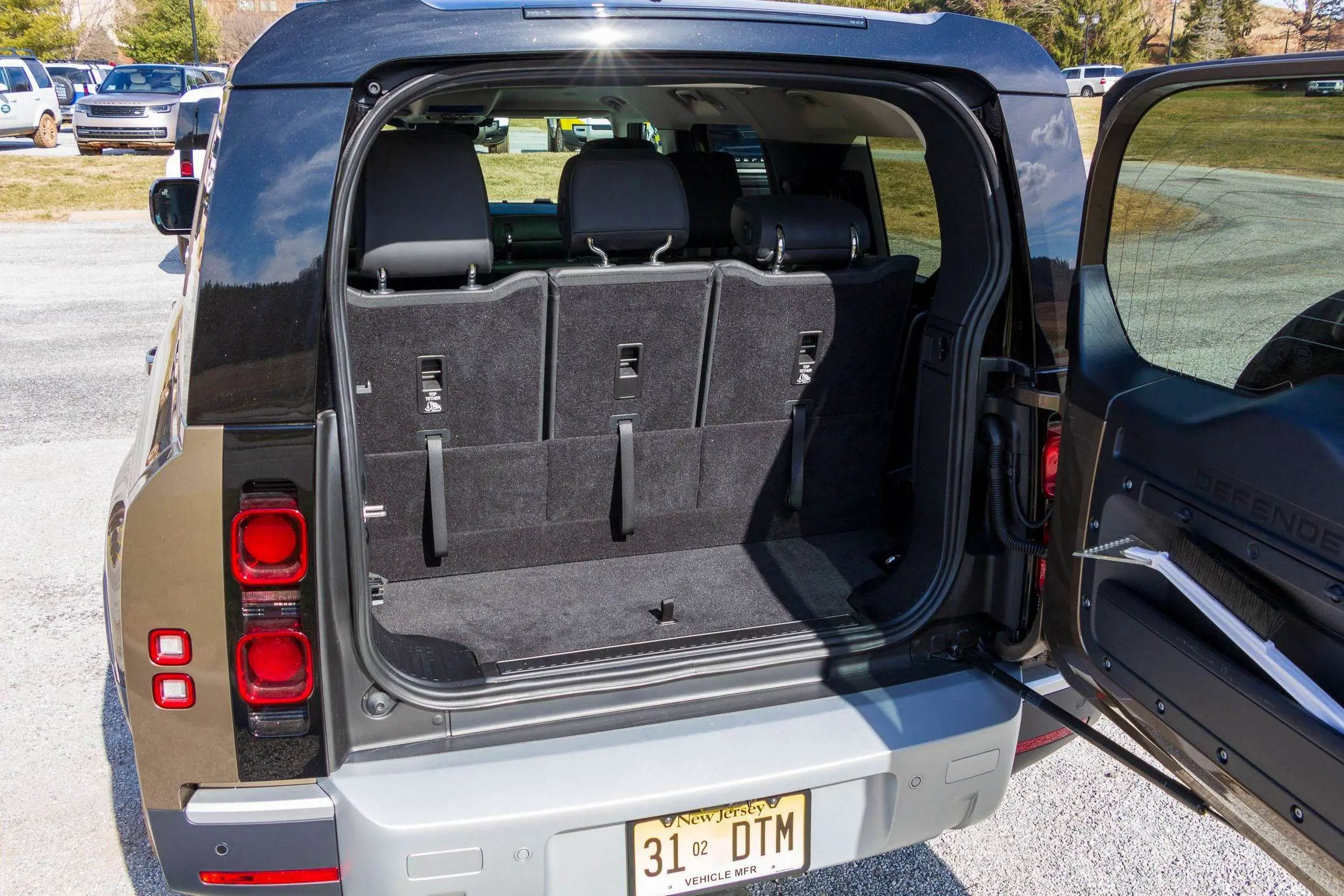



The Defender 110’s seats do fold completely flat in the two-row model, and in the three-row, the floor is flat from the tailgate to the back of the middle row.
If you’re planning on car camping, you might want to add on a roof tent and use the optional accessory deployable (331-pound capacity) roof ladder to climb up and down. The static load rating of the roof is 661 pounds (including the weight of the Expedition Roof Rack), so it should be quite accommodating.
Only Slight Off-Road Compromises
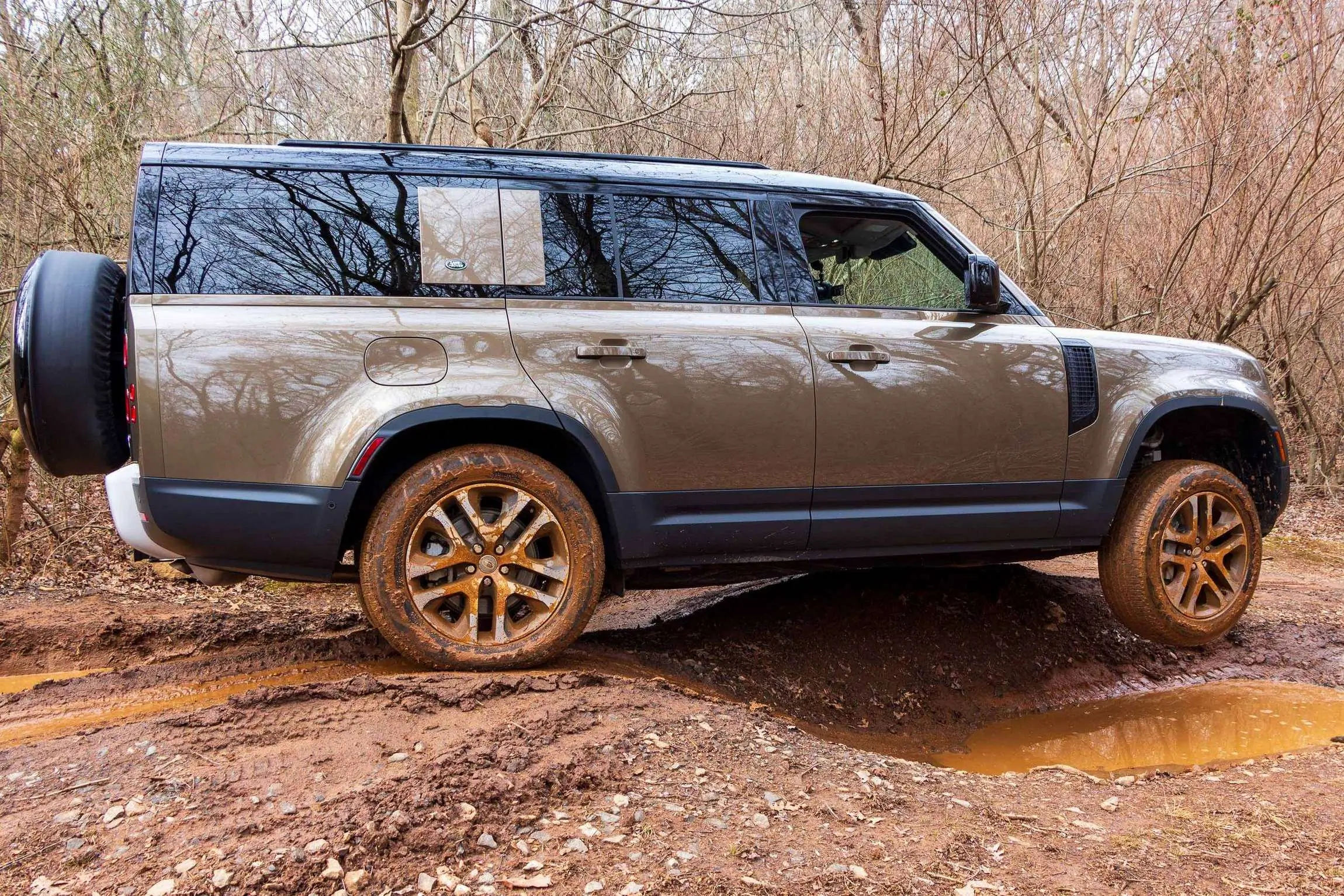



There’s one other big side effect from the extra rear overhang: The departure angle shrinks.
A Defender 90’s departure angle is as good as 40 degrees, with the air suspension fully lifting the vehicle and the same on the 110 model. On the Defender 130, it drops to just 28.5 degrees, though the approach and breakover angles are the same as the shorter versions.
Also, the muffler hangs way out at the back, which could pose some issues. It’s the first place that will hit, even when equipped with a trailer hitch.
The Defender 130’s mufflers stayed clean on the extensive off-road driving courses we used. There were steep ascents, descents, and tall mounds to climb, but nothing seemed to touch the ground.
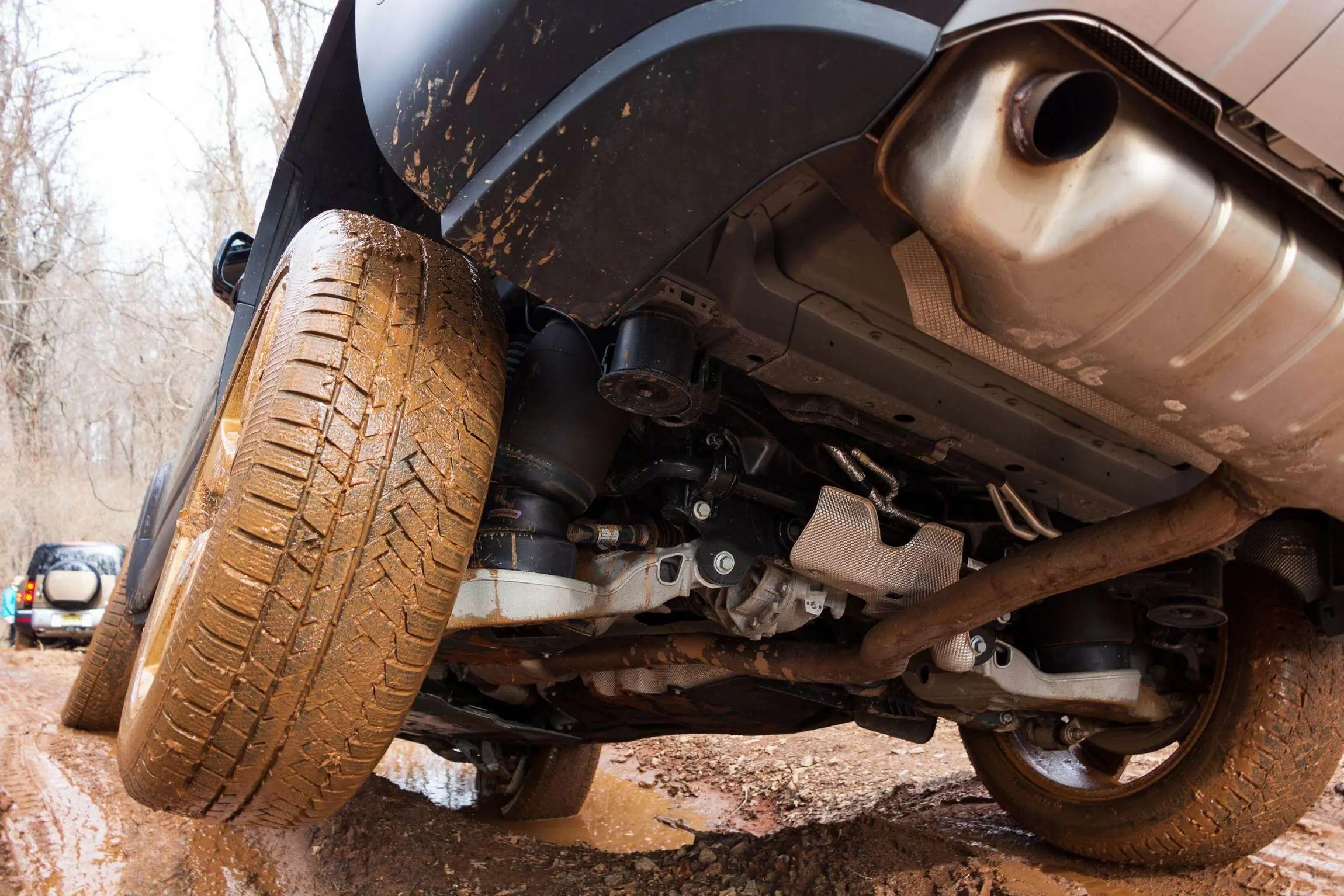



While there were some signs of rear-end dragging in the form of fresh marks on the North Carolina clay, none of them seemed to be from us.
On the other hand, this was Land Rover’s own course, designed specifically to show off its vehicles. It makes sense we wouldn’t scrape. Under the muffler is a tough place to put a skid plate without making the issue worse, so if you’re a hard-core off-roader, it’s something to keep in mind.
Land Rover Defender 130 Gets Standard Air Suspension
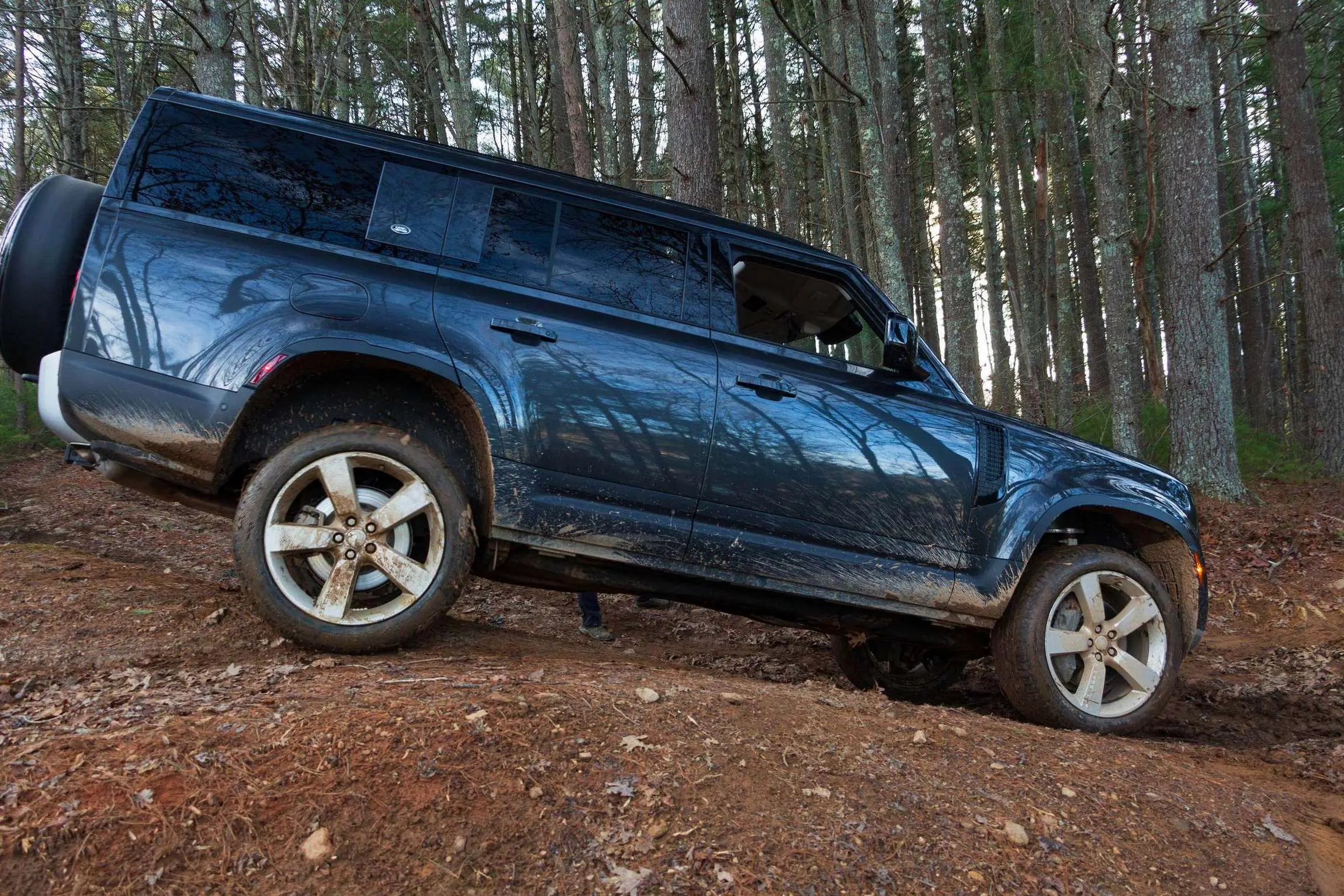



While an option on all Defenders, only the D130 comes standard with air suspension. The air system can drop by two inches to make it easier to get in and out, and it can also climb up to 5.8 inches to give you maximum ground clearance.
Land Rover says that the air suspension allows for up to 16.9 inches of articulation. I only know that figure because I looked it up after the drive. Why did I look it up? Not just in the interest of thoroughness but because I had noticed barely any wheel travel on the D130s on trail, even over the most severe obstacles.
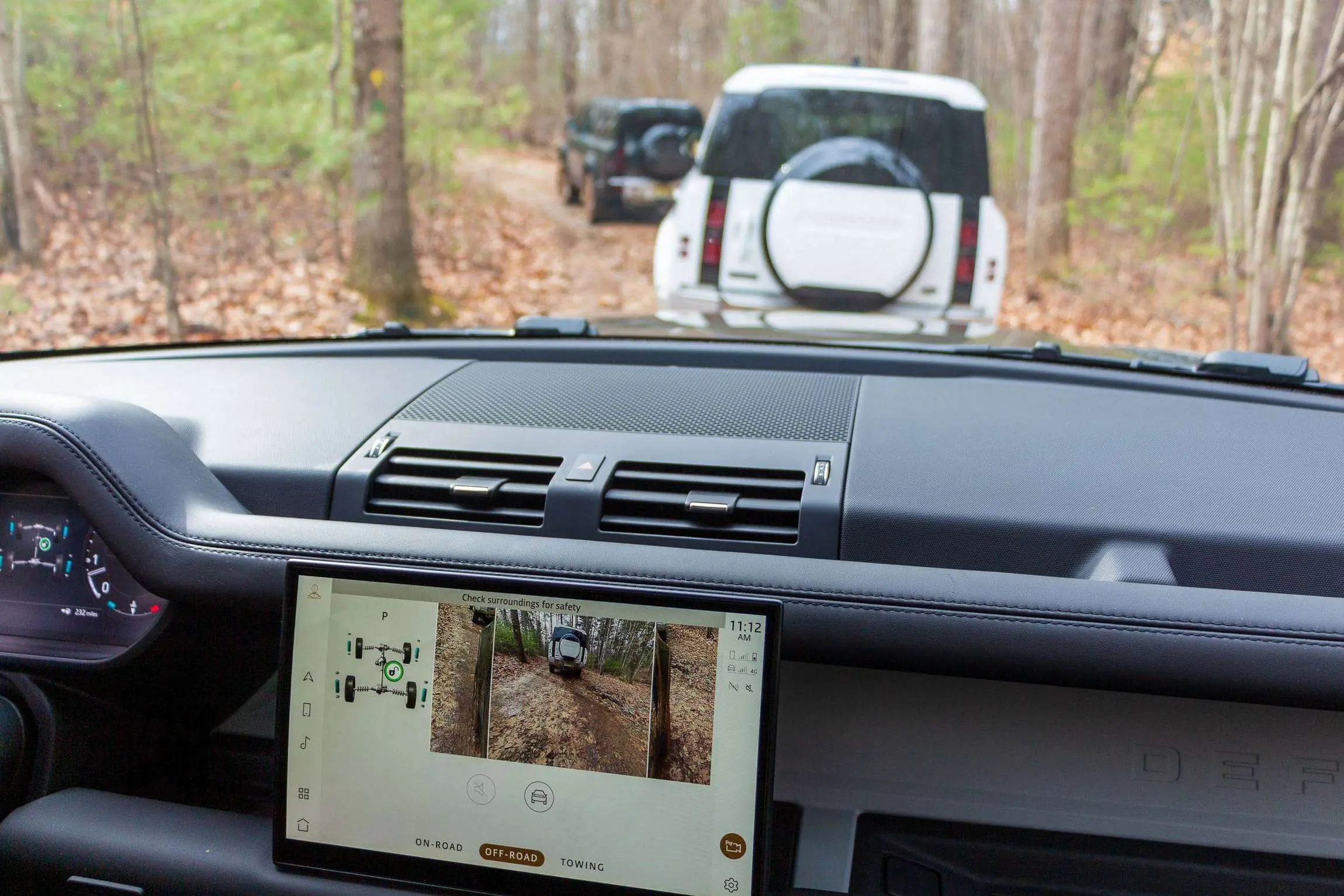



You can watch an icon showing the suspension moving up and down as part of the off-road information display, and it’s pretty cool. But why was I seeing information that conflicted with my eyes?
Land Rover Defender No-Road Comfort
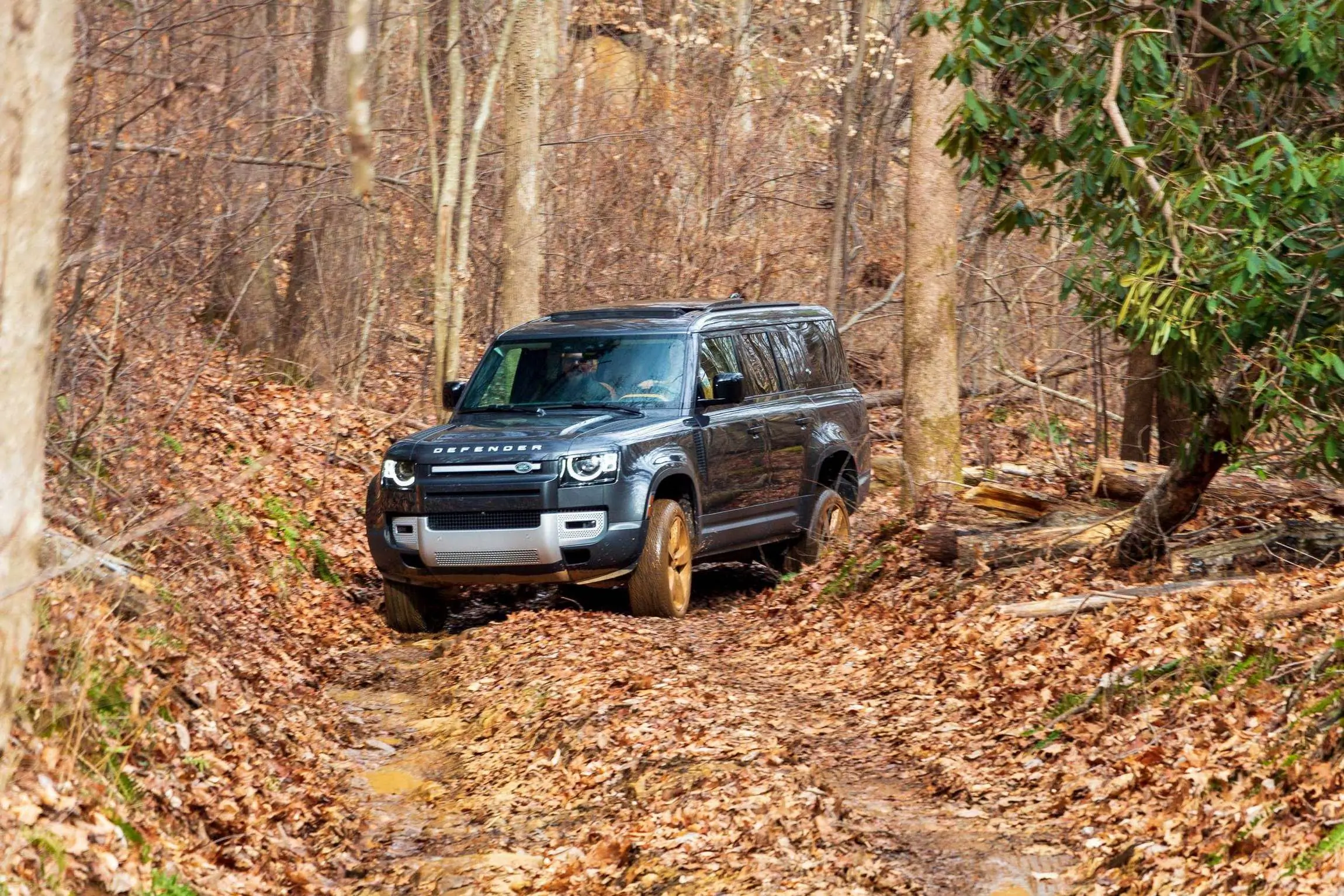



Turns out it’s because of just how good the trick air suspension and electronic shocks are. I was only watching the wheels move when the vehicle was moving with some speed. When you’re pounding down the trail, the air does the work. The impacts are all soaked up, but the wheels and tires barely move up and down.
In slow-speed maneuvers, the suspension will droop and compress a lot more, helping keep the rubber on the ground as much as possible.
The extra weight of the Defender 130 helps out on trails as well. To steal a note from my co-driver, it helps slow down how quickly the back tires leave the ground over obstacles. A more gentle pivot.
The 130 is around 400 pounds heavier than a 110, with all of that weight way at the back. Of course, if you bury it in mud or snow, you’ll quickly regret the weight. On the other hand, you could have three extra passengers to help push.
Legendary Land Rover Ultra-Smooth Traction
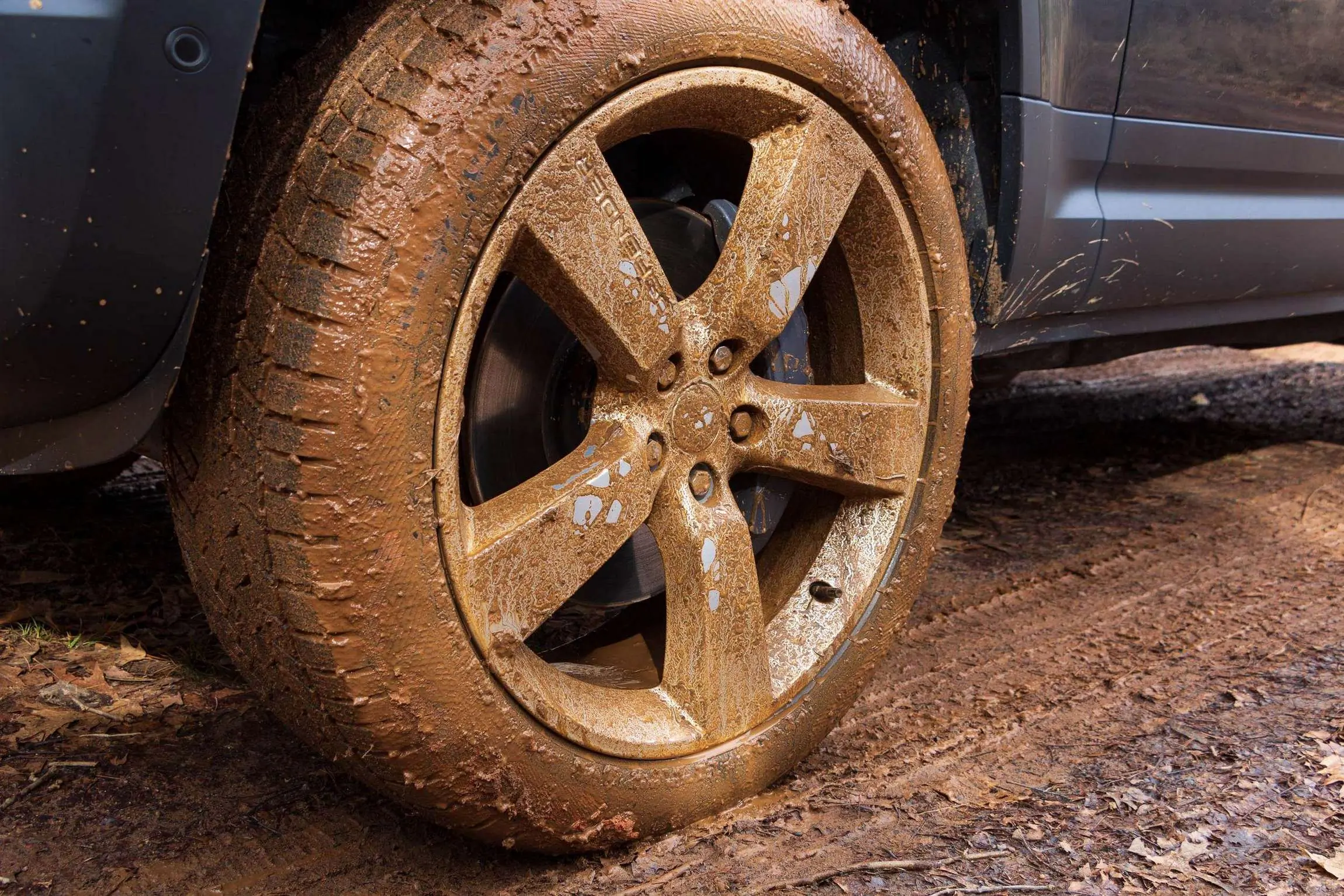



All Defender 130 models get Land Rover’s clever AWD system and a low-range transfer case. The AWD system with an electronic center differential works exceptionally well with the traction control system to maximize grip. Even without the available limited-slip rear.
What made the system stand out was just how transparent it was. No screaming solenoids from underneath, no jerky adding and dumping of power from the engine. The Defender just did its thing and kept you going even with street-oriented tires on 20- and 22-inch wheels (depending on trim level). It made amazing use of the available grip.
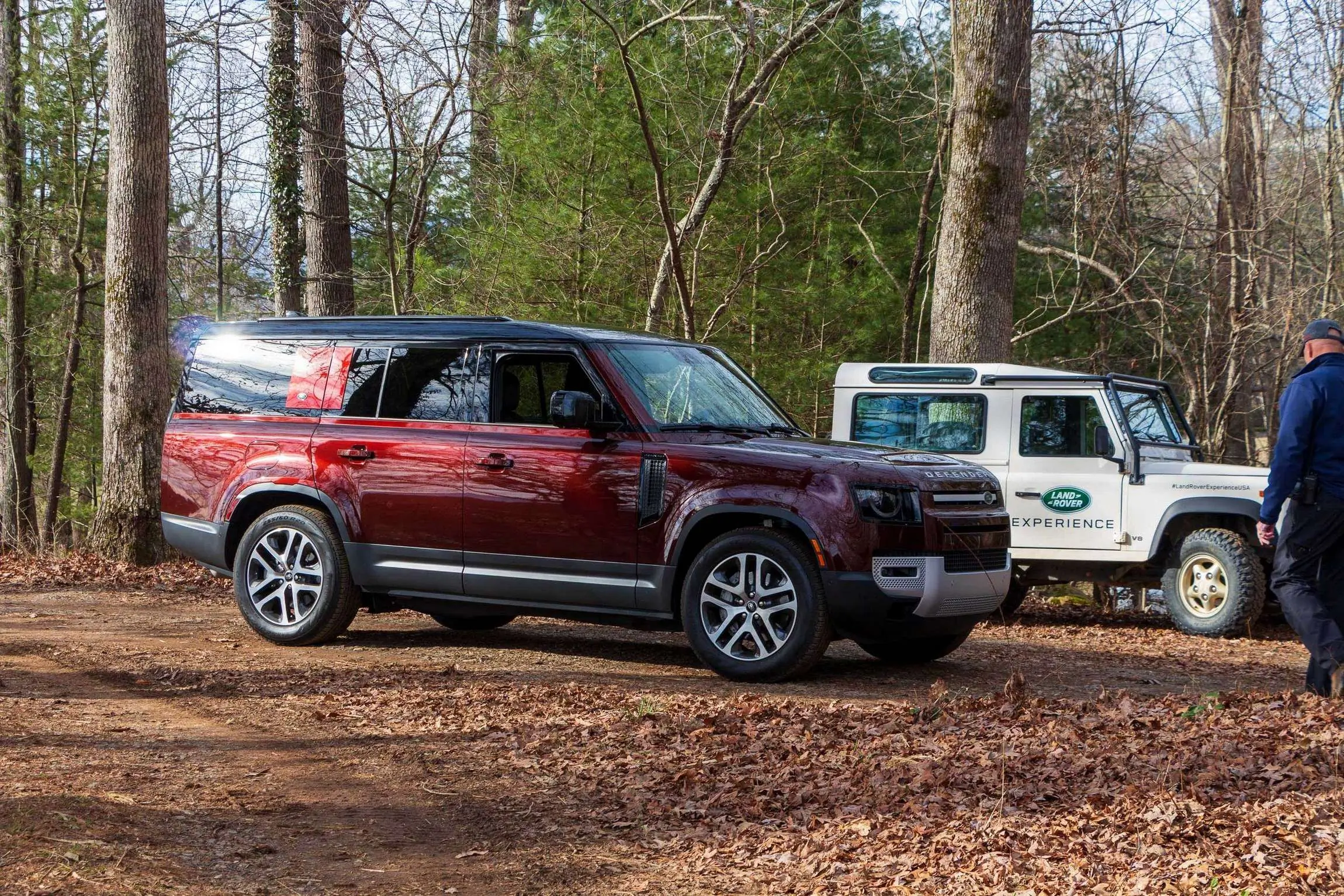



On the drive, I mostly used the Mud and Ruts mode setting, but with the optional Advanced Off-Road Capability Pack, the system is highly configurable. You can make throttle response extremely slow for better pedal control, loosen or tighten the heavy steering, and make more tweaks than I knew what to do with.
Just like on the trail, the on-pavement ride of the Defender 130 is almost the same as the 110. The air suspension handles the extra weight just fine. The only difference I noticed was a tiny bit of extra sway in the wind caused by the extra side sheet metal. On the other hand, it was extra windy, and I could be splitting hairs.
Six-Cylinder Only for Defender 130




The Defender 130 is only offered with Land Rover’s 3.0L inline six-cylinder engine. S-trim models get a 296 horsepower P300 model unique to the 130 with 347 pound-feet of torque — the shorter Defender P300s have a 2.0L four-cylinder that makes the same power but just 295 pound-feet.
All other D130 trims are the P400-badged version with 395 horsepower. The P400 is a mild-hybrid system with a 48-volt starter-generator system that helps improve the start-stop system’s performance.
Land Rover doesn’t offer the 5.0L supercharged V8 from the Defender 90 and 110 with its 518 horsepower on the 130. This makes us a little bit sad because that engine is silly fun. We were told, though, that it was coming.
The six sounds burly enough, though, and the P400 models on the drive had plenty of power. They sucked down plenty of fuel, too. Leave out the off-road bits, and I saw an indicated 19.3 miles per gallon on a route that was largely rural highways.
Extra Sunroof, Not Enough Plugs
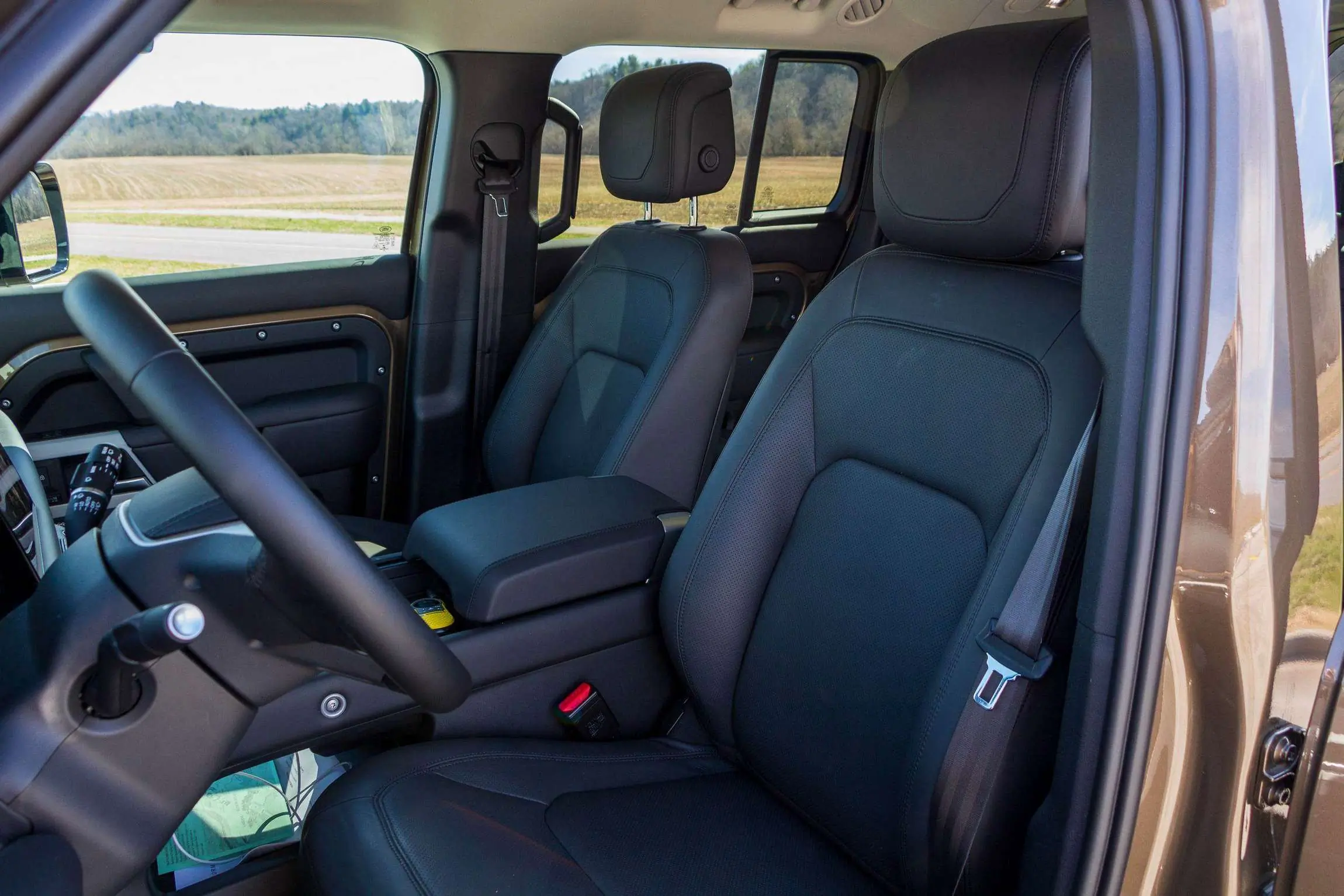



Aside from the extra length, the biggest difference in the cabin is above you. While Defender 110 models can get cool retro-inspired roof edge windows, 130 models get something better — a wide fixed-panel sunroof with shade. The glass lets lots of light in and helps make the last row feel more spacious.
Annoyingly, despite all the seats, there aren’t many USB power ports in the Defender 130. There was one USB-A and USB-C in the front console, and top-spec models had one on the dash for the front passenger. That’s not much power for eight occupants, something to keep in mind.
There are plenty of grab handles inside, in all three rows. The front center console handles are sturdy and feel like they can actually be used to help get in and out. That’s a nice surprise in a field where most grab handles feel like they’re attached to the vehicle with hopes and prayers rather than actual fasteners.
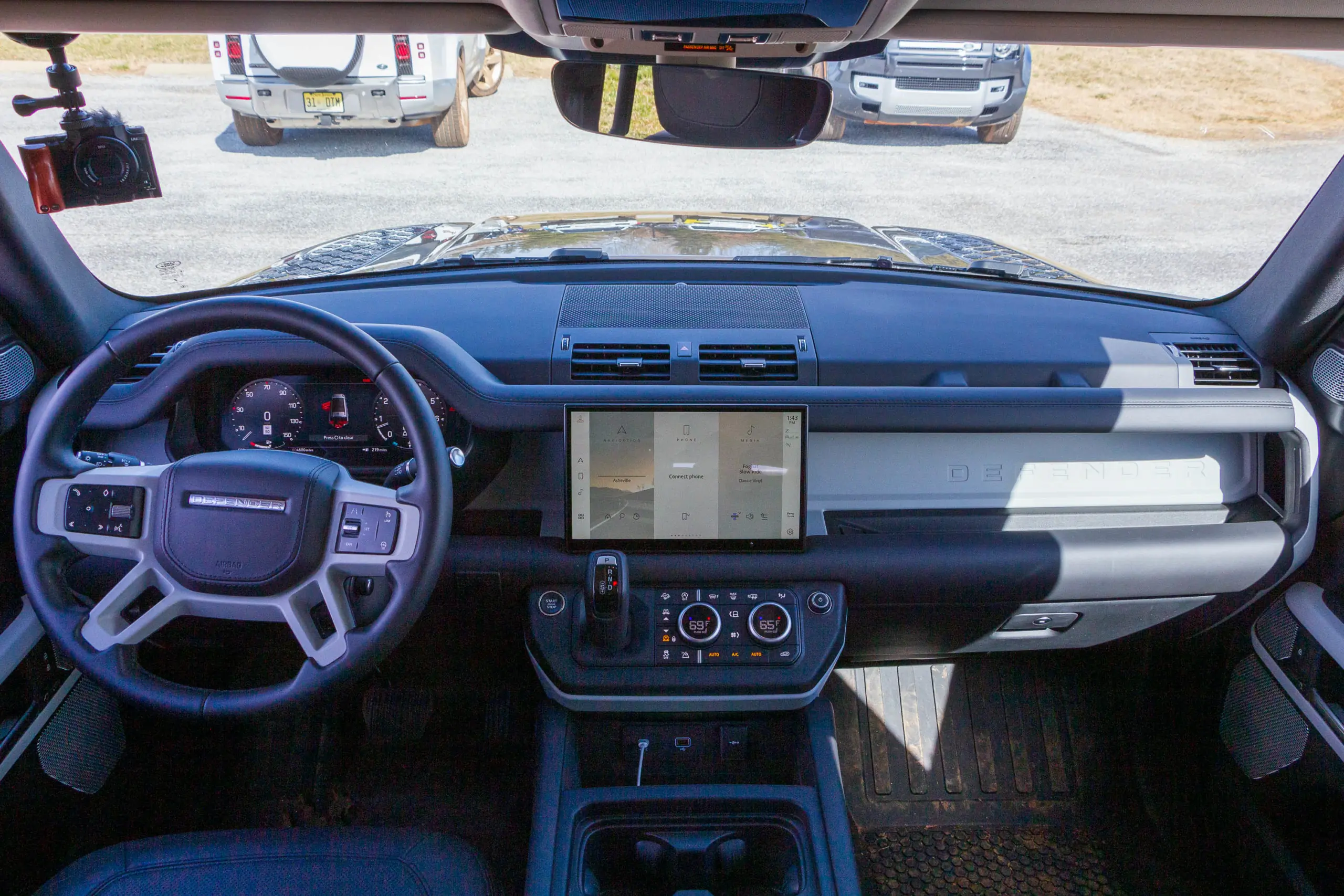



Land Rover’s 11.3-inch screen is clear, crisp, and (importantly) responsive. The multi-function dials for the temperature control that also handle terrain settings, seat warming, and the fan speed depending on what button you push, are much less intuitive, though you’ll probably get used to it pretty quickly.
A Defender 130 S, the base trim, starts from $68,000. That’s a bit of a hike over the $53,500 starting price of the 110, but it does come with a lot extra. Start optioning the two more closely, including the extra seats and air suspension, and the prices close to within a few thousand. Not bad for the extra space and that six-cylinder engine.
Land Rover Defender 130 Review: Conclusion




With the Defender 130, Land Rover has made the retro style and off-road capability of the Defender accessible to families who need more seats and/or more space. It can do nearly everything the D110 can, but with extra cargo space and real third-row room.
Despite that rear overhang, we even like the looks of this one. It would be a lot better, though, if Land Rover could flatten out the cargo floor. That could turn this into something special on your next adventure.
